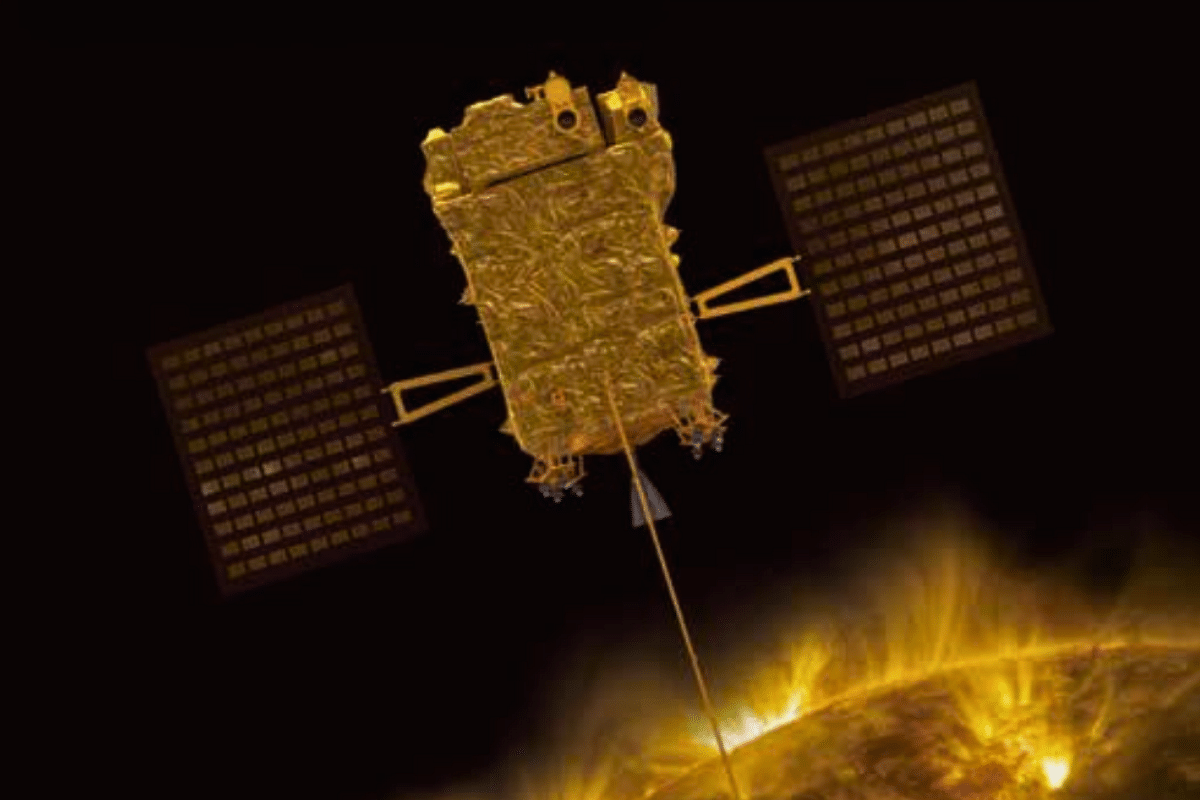News Brief
India's First Solar Mission Aditya-L1 To Enter Final Orbit Today After 127-Day Journey

An illustration of the Aditya-L1 spacecraft after it has been deployed, depicted in an ISRO mission booklet
After a 127-day journey, the Aditya-L1 spacecraft, which is India's first solar mission, will reach its final orbit today (6 January), from where it will be observing the Sun for the upcoming five years.
The spacecraft is slated to enter an orbit around the L1 (Lagrange 1) point, a location among five in the Earth-Sun system where the gravitational forces of both bodies essentially nullify each other.
This point provides a comparatively steady position for the spacecraft to station itself and conduct solar observations.
However, achieving an orbit around L1 differs significantly from reaching an orbit around any other celestial body, and is being viewed as the most critical hurdle in this mission.
The spacecraft will spend the rest of its mission life orbiting around L1 in an irregularly-shaped orbit in a plane roughly perpendicular to the line joining the Earth and the Sun, according to an ISRO scientist.
According to M Annadurai, a former scientist at ISRO and project director on the Chandrayaan 1 mission, securing and sustaining an orbit around L1 presents its own set of difficulties.
Built at a cost of Rs 400 crore, the nearly 1,500 kg satellite will function as the first space-based Indian observatory to study the sun nearly 1.5 million kilometres from the Earth.
The satellite is anticipated to be positioned in a halo orbit around the Lagrange point 1 (L1) at around 4 pm. The final insertion point was selected due to its beneficial location that is unaffected by eclipses and allows for a constant view of the Sun.
The mission, Aditya-L1, was launched on the 2 September last year from ISRO's Sriharikota launchpad in Andhra Pradesh.
"This manoeuvre (at around 4 pm on Saturday) will bind the Aditya-L1 to a halo orbit around L1. If we don't do this, there is a possibility that it will continue its journey, maybe towards the Sun," an ISRO official told news agency PTI.
The operation scheduled for approximately 4 pm on Saturday will secure the Aditya-L1 in a halo orbit around L1. Without this action, there's a risk that it might continue on its path, potentially towards the Sun, according to an ISRO official who spoke to PTI news agency.
The space observatory will keep an eye on the changing space weather and warn scientists about unfavourable changes including solar storms and flares that may impact the working of satellites. A solar storm is a large-scale magnetic eruption on the Sun, which can effect the entire solar system.
The Aditya-L1 satellite, equipped with seven payloads, is set to undertake scientific experiments aimed at enhancing our understanding of the photosphere, chromosphere, and the Sun's outermost layers, known as the corona. These experiments will utilize electromagnetic, particle, and magnetic field detectors.
Support Swarajya's 50 Ground Reports Project & Sponsor A Story
Every general election Swarajya does a 50 ground reports project.
Aimed only at serious readers and those who appreciate the nuances of political undercurrents, the project provides a sense of India's electoral landscape. As you know, these reports are produced after considerable investment of travel, time and effort on the ground.
This time too we've kicked off the project in style and have covered over 30 constituencies already. If you're someone who appreciates such work and have enjoyed our coverage please consider sponsoring a ground report for just Rs 2999 to Rs 19,999 - it goes a long way in helping us produce more quality reportage.
You can also back this project by becoming a subscriber for as little as Rs 999 - so do click on this links and choose a plan that suits you and back us.
Click below to contribute.
Latest